David Whitley explores the Cook Islands’ crowning glories, Rarotonga and Aitutaki.
Click here to download and save as a PDF.
The Cook Islands might be the stuff of fantasy, but not necessarily pipe dreams. With 15 islands spread across a vast distance in the South Pacific, and a population of less than 20,000, perhaps the most surprising thing about the Cooks is their relative accessibility.
Yet even if they do benefit from one of the world’s weirdest flight routes, the two main islands – Rarotonga and Aitutaki – manage to hit that sweet spot of being gorgeous Pacific paradises while having good quality infrastructure.
Sell: Add to the Antipodes
Air New Zealand flies direct to main island Rarotonga from Los Angeles, before heading on to Auckland. This makes it wonderfully easy to work into a round-the-world ticket, and a tantalising add-on for a trip to New Zealand.
The only problem with the latter is that the seasons don’t match – the best time to visit the Cooks is the relatively drier, cooler season between May and November, while New Zealand is a better bet in the other half of the year. Hit the shoulder seasons, and it works – otherwise, prepare for a few rainy days in the Cooks or the Kiwi winter.
“The best time to visit the Cooks is the relatively drier, cooler season between May and November, while New Zealand is a better bet in the other half of the year.”
Rarotonga feels like a near-perfect island escape. Everything is low rise – by law, nothing is allowed to be built higher than a coconut tree – and it takes about an hour to drive around the island. But there are also plenty of high-quality resorts, appealing restaurants and activity providers.
That tightrope between relaxed and interesting is expertly walked. It’s the sort of place you feel quite happy ambling around, with nothing particularly stressful to worry about, and the tropical mirage factor turned up high.
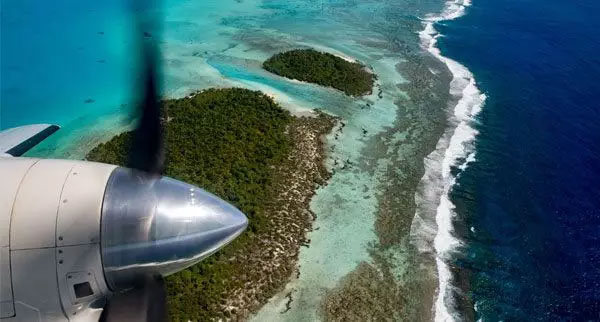
The island is also surrounded by an absolutely fabulous lagoon – ideal for snorkelling and boat tours, while the ferocious Pacific surf crashes into the other side of the reef.
In recent years, Muri on the eastern side has turned from pseudo-settlement with a couple of hotels into an attractive tourist village with several restaurants and cafes within easy walking distance of the white-sand beach. It’s also on the prettiest part of the lagoon, with four little islets a swim or kayak paddle away.
“Rarotonga’s surrounding lagoon may be worth flying to the other side of the world for, but Aitutaki’s is worth flying to another galaxy for.”
But if Rarotonga pulls off all-round loveliness, Aitutaki – a 45-minute internal flight north – is a serious escalation into top of the bucket-list territory. Rarotonga’s surrounding lagoon may be worth flying to the other side of the world for, but Aitutaki’s is worth flying to another galaxy for.
The population is lower and the pace even slower. But frankly, all cares of being near the rat race will be long gone once floating along on the clear turquoise and teal waters.
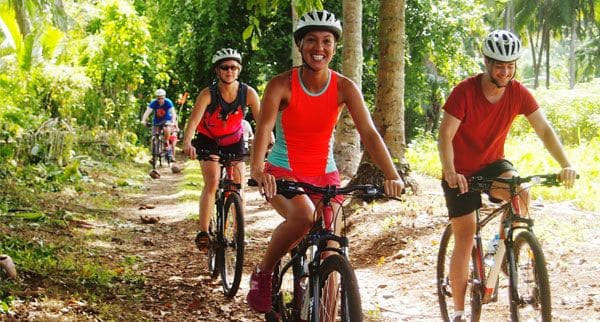
See: By land and sea
It’s not all about the good looks, of course. For a cultural and historic grounding, Te Ara – the Cook Islands Museum of Cultural Enterprise (£10), is well worth visiting. It acts as both a hub for local artists and growers, and a museum that delves into the human history of the islands and of Polynesia as a whole. This includes the extraordinary navigational and shipbuilding feats that led to the inhabitation of the far-flung Pacific Islands while Europeans were still too scared to venture out of sight of the coast.
“For a cultural and historic grounding, Te Ara – the Cook Islands Museum of Cultural Enterprise (£10), is well worth visiting.”
For exploration of a slightly less intrepid kind, Raro Buggy Tours (£38 per person for a double) gives guests the control of a rudimentary metal buggy with a noisy engine, then heads off the main round-island road to indulge in some gleeful splashing in the mud. Those who throw themselves into it come out very muddy indeed, but everyone gets to visit a waterfall and the near-ruins of the Sheraton resort that never opened. The latter, as with much on Rarotonga, is very much about the storytelling.
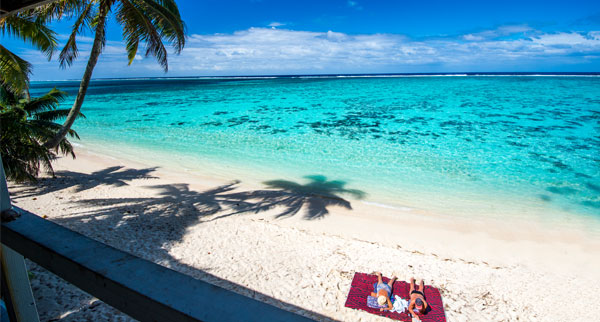
This is taken up a gear with Storytellers Eco Tours, which explores the island by bike (£38). The routes are adaptable, but will often visit a secret swimming hole under a waterfall, a little beach where there’s usually not another soul, and plenty of spots where there’s an excuse to expand on a legendary tale of ancestral exploration. But a large part of the tour is about fruit, which grows in such abundance that there seems to be no issue in just picking it off trees in gardens.
Over on Aitutaki, Punarei Cultural Tours (£41) also throws in a lot of fruit, while having a bigger focus on the cultural side of things. The exact itinerary depends on numbers, but may include a visit to a marae – a traditional ceremonial ground where mysterious standing stones may either be a barrier, a grave site or a representation of an ancestral family tree, depending on interpretation. If enough people book, there will also be a meal cooked in an umu – an earth oven where the meat and veg is buried underground to cook.
“The routes are adaptable, but will often visit a secret swimming hole under a waterfall or a little beach where there’s usually not another soul.”
But, frankly, no one comes to Aitutaki to explore inland. The lagoon is staggering, and Bishop’s Cruises (£49) is among the operators that head out to its furthest reaches. These include the islet where seaplanes would stop to refuel in the 1950s, often with the likes of Marlon Brando and John Wayne aboard on the way to Tahiti, plus a fantastic snorkelling spot and the hugely photogenic One Foot Island.
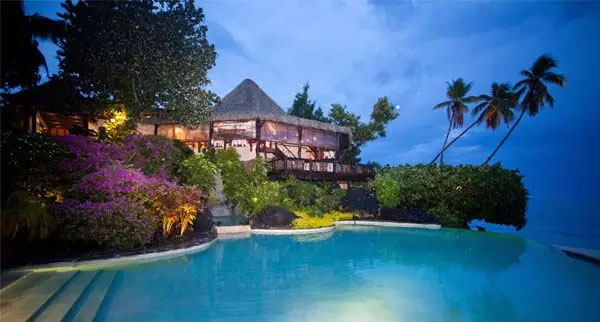
Stay: Hot hotels
The best base on Rarotonga is definitely Muri, which has grown over the past few years into a loveable mini tourist town, with several accommodation options, activities, restaurants and cafes within an easy walking distance of each other.
Muri Beach Club is one of the longer-standing options here, with large airy rooms and a series of thoughtful touches that elevate it. These include a giant chess set and guides to all the fish that can be seen in and beyond the lagoon, plus free kayaks, stand-up paddleboards and snorkel sets for guests. Prices start at £186 per night.
“It’s spacious, wired up with Bluetooth technology and has just enough local design touches to feel part of the landscape.”
At the other end of Muri, the Nautilus Resort (from £349) is the newest luxury option. Each tropical are’ has a plunge pool, free Wi-Fi (something that often costs a fortune in the Cooks), dark wood varnished floors and sunbeds on the decking outside. It’s spacious, wired up with Bluetooth technology and has just enough local design touches to feel part of the landscape.
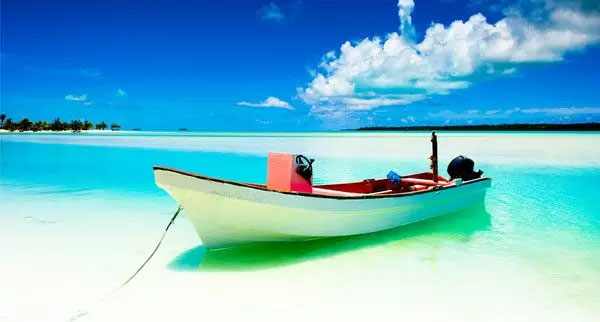
For something completely different, the Ikurangi Eco Retreat (from £128) is inland, surrounded by fruit trees and marvellous mountain views. It does glamping with luxury safari tents imported from Africa kitted out in comfort. There’s a small on-site pool and a strong environmental focus that stretches to composting toilets and breakfast full of food largely grown on site.
Over on Aitutaki, the Tamanu Beach Resort (from £254) has big, spacious coconut palm-thatched bungalows with indoor and outdoor showers and a prime position on the most gorgeous of white-sand beaches. The layout is a little odd – it’s split into two separate parts with another building in between – but the bungalows are beautifully furnished. Hardwood floors, mahogany vanity benches and quirky outdoor showers are part of the ensemble.
“There’s a small on-site pool and a strong environmental focus that stretches to composting toilets and breakfast full of food largely grown on site.”
The Pacific Resort (from £590) is generally regarded as the top address here. Three miles of beach frontage, 27 bungalows and villas among 19 acres of tropical gardens and one of the best restaurants in the country make for a very pampered, honeymoony experience.
Read more
Exploring Nicaragua’s Caribbean Corn Islands
Australasia: New Zealand’s North Island
The best sights in New Zealand by land, air and sea




